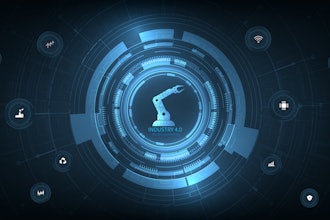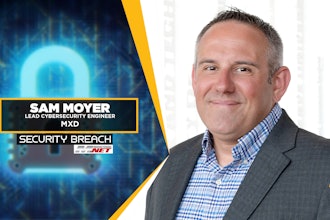We’ve all heard the term “social media” and you may’ve even been afraid to ask, “What the heck is that?!” Regardless of awareness level, you shouldn’t be asking yourself if your business should be engaged in social media, you should be asking yourself how.
Practically overnight, social media has become a cultural phenomenon. Simply stated, social media is people going online to find, read, or share stuff that interests them. Commonly used platforms are Facebook, Twitter, YouTube, and LinkedIn. And contrary to popular opinion, it’s not just a personal platform that millennials use during their free time. Increasingly, people of all ages and nationalities jump online 24/7 for literally everything: to research gift ideas, share photos, review products, get directions, or to make purchases.
Social media is not a fad that will fade in time. Like your morning cup of coffee, it’s here to stay.
Read More: Should All Industrial Distributors Be Using Social Media?
Social media transcends personal opinions, past-times and hobbies. Its ubiquitous influence is felt in industries both large and small, near and far. Baby boomers are embracing social media in droves, looking to communicate with grandkids and reconnect with friends. Whether you like it or not, people right now are vetting your business based upon content they find about you online.
To help guide you, here’s three smart steps to follow when looking to jumpstart your company’s social media engagement:
1. Social Media Lite:
First, realize that in this day and age you absolutely, positively must have a social media presence. At a bare minimum, your company should set up accounts on LinkedIn, Facebook and Twitter. To do so, find your most tech savvy associate and have him/her get online with your logo, some pictures, key contact information, company facts, and your reason for being (think elevator speech.)
This first step is non-negotiable and must be done ASAP. If you don’t have capable internal resources, it is worth the investment to have an outside vendor handle this on your behalf. Just ensure they share all account info (user names and passwords) to enable you to self-manage your accounts in perpetuity. This step isn’t expensive, complicated or even time-intensive. People are already forming opinions about your organization, and probably sharing them online. As any PR counselor will tell you it’s important to control the message, and having a social media presence is a way to accomplish this. This first step truly is the baseline cost of doing business today.
2. Define Your Brand:
Step two focuses on building online content within the framework established in step one so that you’re engaging social media in a timely (and purposeful) way. From new product launches and success stories to employee service anniversaries and customer awards, there’s plenty of content that industrial businesses can post.
And you should post. Many of your stakeholders find value in the content shared. Social media is a powerful new channel-to-market primed for you to get your business noticed in a positive way. And with step two, you’ve now taken what was a simple online presence and launched a bonafide program.
A valuable by-product of this second step is tangible ROI. Like most online efforts, you’ll be able to track and quantify all activity (number of visitors, page “likes”, etc.). This is powerful data to capture and analyze to help guide strategic planning. It’s good to know what your target audiences/stakeholders think about you and your company (warts and all.)
With step two complete, you’ve effectively created an online measurable forum for people (customers, vendors, former employees, etc.) to engage your organization on a personal, yet professional level where they can provide feedback, ask for technical support, provide critiques, etc. that ultimately reflects how your company (brand, associates, policies, service levels, prices) is perceived by the market.
3. Establish A Process:
Third, (and a rare final step today within the industrial distribution realm) is creating a daily, strategic online content management system. This only happens when you commit a dedicated resource (FTE) to reinforce and grow your brand in meaningful ways each and every day via social media.
This final step follows a structured, formal daily process to engage your company’s online audiences by posting content that positions your company as best in breed. This includes content from your team on best practices, helpful hints, and upcoming tradeshows/events.
Great content is king. Post anything that you consider valuable. This includes how-to videos, conversion charts, technical specs, best practices, success stories, etc. The goal is consistent, quality content that is aligned with your brand promise.
Make no mistake, companies that have embraced step three can directly attribute business success (leads, sales, VOC improvements, etc.) to the social media process; social media is making them money.
With step three, your social media function is now part of the expected, daily workflow and has become an integral component of your overall multi-faceted marketing plan.
All industrial businesses must be present online in some formal fashion or risk being viewed as outdated or even irrelevant. It’s like choosing not to travel to an industry event you’ve attended for years, or forgoing an annual display ad in a trade publication, you become conspicuous by your absence. Forgo social media and you’ll be viewed differently.
A fully operational social media process at your organization will allow you to educate, engage and convert readers into leads. And you will close more business (direct sales) because of your social media program.
Keep in mind it’s not an overnight process – it’s brand-building, and like Rome, wasn’t built in a day.
The granular nature of online audience segmentation allows surgical strikes to an audience of one, a concept previously unattainable with traditional media.
People do business with people. And social media is people. This isn’t a lifeless magazine ad or a direct mail postcard; social media is one person’s thoughts/opinions/perception of your business. In this manner, it affords you the chance to identify opportunities and seize upon them.
As the information age continues to advance at a seemingly ever-increasing pace, any perceived lack of presence online is to your company’s detriment. Do yourself a favor now and invest the time to establish a baseline social media profile for your business; it’ll help attract, land and retain customers, vendors, and employees. You’ll thank me later.
Jeff Guritza is an international sales and marketing professional with more than 20 years’ experience working for both manufacturers and distributors within several industrial markets: power transmission, fluid power, and now power tool accessories.























